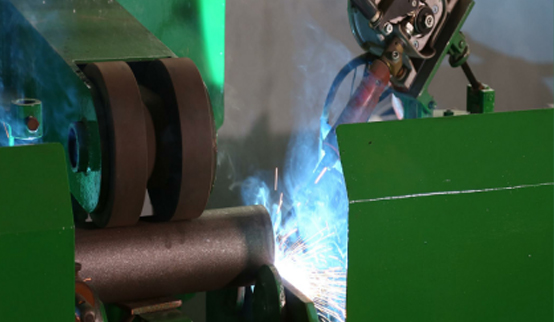 Afrikaans
Afrikaans  Albanian
Albanian  Amharic
Amharic  Arabic
Arabic  Armenian
Armenian  Azerbaijani
Azerbaijani  Basque
Basque  Belarusian
Belarusian  Bengali
Bengali  Bosnian
Bosnian  Bulgarian
Bulgarian  Catalan
Catalan  Cebuano
Cebuano  Corsican
Corsican  Croatian
Croatian  Czech
Czech  Danish
Danish  Dutch
Dutch  English
English  Esperanto
Esperanto  Estonian
Estonian  Finnish
Finnish  French
French  Frisian
Frisian  Galician
Galician  Georgian
Georgian  German
German  Greek
Greek  Gujarati
Gujarati  Haitian Creole
Haitian Creole  hausa
hausa  hawaiian
hawaiian  Hebrew
Hebrew  Hindi
Hindi  Miao
Miao  Hungarian
Hungarian  Icelandic
Icelandic  igbo
igbo  Indonesian
Indonesian  irish
irish  Italian
Italian  Japanese
Japanese  Javanese
Javanese  Kannada
Kannada  kazakh
kazakh  Khmer
Khmer  Rwandese
Rwandese  Korean
Korean  Kurdish
Kurdish  Kyrgyz
Kyrgyz  Lao
Lao  Latin
Latin  Latvian
Latvian  Lithuanian
Lithuanian  Luxembourgish
Luxembourgish  Macedonian
Macedonian  Malgashi
Malgashi  Malay
Malay  Malayalam
Malayalam  Maltese
Maltese  Maori
Maori  Marathi
Marathi  Mongolian
Mongolian  Myanmar
Myanmar  Nepali
Nepali  Norwegian
Norwegian  Norwegian
Norwegian  Occitan
Occitan  Pashto
Pashto  Persian
Persian  Polish
Polish  Portuguese
Portuguese  Punjabi
Punjabi  Romanian
Romanian  Russian
Russian  Samoan
Samoan  Scottish Gaelic
Scottish Gaelic  Serbian
Serbian  Sesotho
Sesotho  Shona
Shona  Sindhi
Sindhi  Sinhala
Sinhala  Slovak
Slovak  Slovenian
Slovenian  Somali
Somali  Spanish
Spanish  Sundanese
Sundanese  Swahili
Swahili  Swedish
Swedish  Tagalog
Tagalog  Tajik
Tajik  Tamil
Tamil  Tatar
Tatar  Telugu
Telugu  Thai
Thai  Turkish
Turkish  Turkmen
Turkmen  Ukrainian
Ukrainian  Urdu
Urdu  Uighur
Uighur  Uzbek
Uzbek  Vietnamese
Vietnamese  Welsh
Welsh  Bantu
Bantu  Yiddish
Yiddish  Yoruba
Yoruba  Zulu
Zulu Conveyor Bracket Solutions for Efficient Material Handling and Installation Techniques
Understanding Conveyor Brackets Essential Components for Efficient Systems
Conveyor systems are integral to the logistics and manufacturing sectors, enabling the smooth transport of goods and materials from one location to another. Within these systems, various components play critical roles in ensuring both functionality and safety. Among these components, conveyor brackets are essential elements that support the overall structure and efficiency of conveyor systems. In this article, we will explore the significance of conveyor brackets, their types, applications, and the factors to consider when selecting them.
What are Conveyor Brackets?
Conveyor brackets are mounting devices that hold and support different parts of a conveyor system, including belts, rollers, and frames. They are designed to provide stability and ensure that all components function harmoniously. Moreover, they help to minimize vibration and misalignment, which can lead to operational inefficiencies. Conveyor brackets can be made from various materials, including steel, aluminum, and plastic, depending on the specific requirements of the application.
Types of Conveyor Brackets
There are several types of conveyor brackets, each suited for different applications
1. Standard Brackets These are the most commonly used conveyor brackets. They often come in various shapes and sizes and are employed in general-purpose applications where medium load capacities are required.
2. Heavy-Duty Brackets Designed for industrial applications, heavy-duty brackets are built to withstand substantial loads and were typically made from robust materials. These brackets are used in environments where heavy materials are transported, such as construction and mining.
3. Adjustable Brackets These brackets offer versatility as they can be modified to accommodate different heights or angles. They are especially useful in systems that require frequent adjustments or reconfigurations.
4. Specialized Brackets Some applications may require brackets designed for specific tasks or environments. For instance, brackets for food-grade conveyors are designed to meet cleanliness and hygiene standards, while those used in corrosive environments may be made from stainless steel to resist rust.
Applications of Conveyor Brackets
Conveyor brackets find applications across various industries
conveyor brackets

- Manufacturing In manufacturing facilities, conveyor systems equipped with appropriate brackets streamline production processes, helping to move parts and products efficiently along assembly lines
.- Warehousing and Distribution Conveyor brackets support systems that facilitate the storage and shipping of products, enhancing the speed and accuracy of order fulfillment.
- Food Processing In food processing plants, conveyor brackets assist in transporting products while ensuring compliance with safety and hygiene regulations.
- Mining and Construction These industries utilize heavy-duty conveyor brackets to support systems that handle bulk materials, ensuring durability and reliability in harsh environments.
Factors to Consider When Selecting Conveyor Brackets
When it comes to selecting conveyor brackets for specific applications, several factors should be considered
1. Load Capacity Ensure that the brackets can support the weight of materials being transported.
2. Material The material of the brackets should be chosen based on the application environment, such as susceptibility to corrosion or the necessity for hygiene.
3. Compatibility Brackets must be compatible with other components of the conveyor system to ensure seamless integration.
4. Adjustability If the application requires frequent changes or adjustments, selecting brackets that offer flexibility is crucial.
In conclusion, conveyor brackets play a vital role in the efficiency and stability of conveyor systems across various industries. By understanding their types, applications, and selection criteria, businesses can improve their conveyor system performance and reduce operational costs. As industries continue to evolve, the importance of reliable and effective conveyor brackets will only grow, underscoring their critical role in modern logistics and manufacturing.
-
Revolutionizing Conveyor Reliability with Advanced Rubber Lagging PulleysNewsJul.22,2025
-
Powering Precision and Durability with Expert Manufacturers of Conveyor ComponentsNewsJul.22,2025
-
Optimizing Conveyor Systems with Advanced Conveyor AccessoriesNewsJul.22,2025
-
Maximize Conveyor Efficiency with Quality Conveyor Idler PulleysNewsJul.22,2025
-
Future-Proof Your Conveyor System with High-Performance Polyurethane RollerNewsJul.22,2025
-
Driving Efficiency Forward with Quality Idlers and RollersNewsJul.22,2025





























